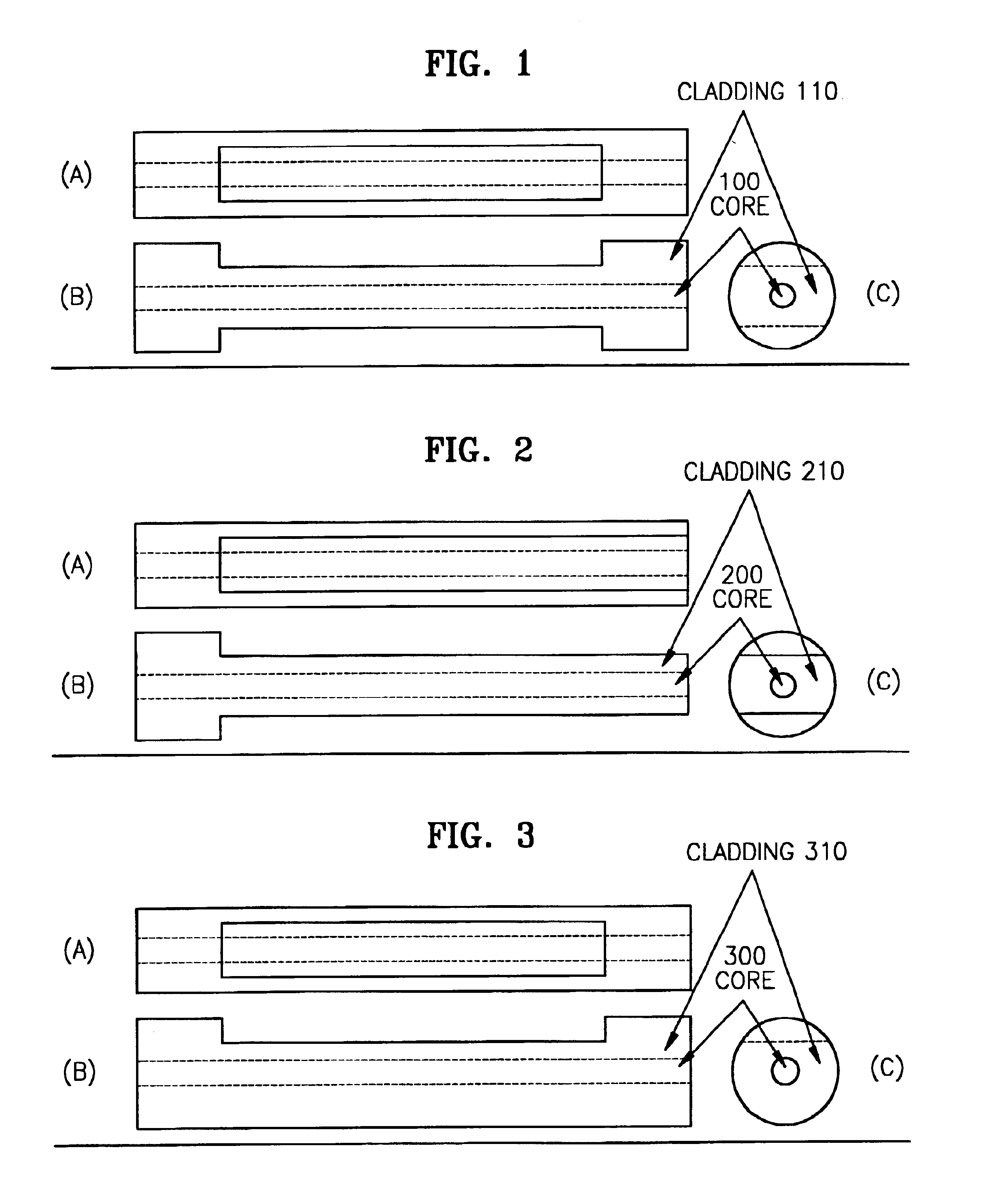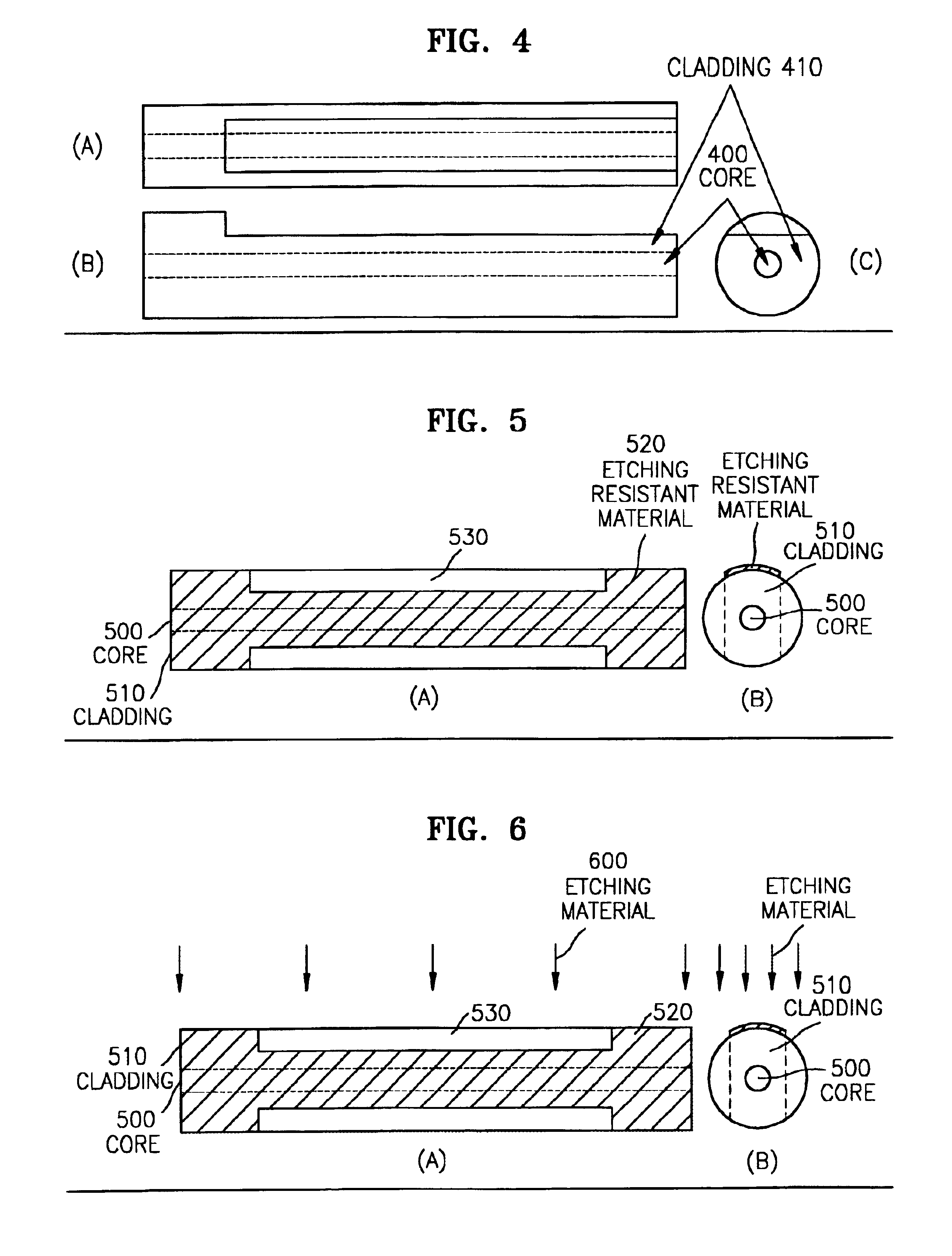Poled fiber, a method of fabricating the poled fiber, and a dispersion compensator
a technology of poled fiber and compensator, which is applied in the field of poled fiber, can solve the problems of imposing the character of second-order nonlinearity on the fiber, inability to achieve the desired effect, and the distance between the fiber core and the electrode is too close, so as to achieve the effect of compensating for the chromatic dispersion and high electro-optic coefficien
- Summary
- Abstract
- Description
- Claims
- Application Information
AI Technical Summary
Benefits of technology
Problems solved by technology
Method used
Image
Examples
Embodiment Construction
In each of FIGS. 1 through 4, (a) is a front view from the direction to which an etching material is projected so as to form a groove on the optical fibre, (b) is a side view from the direction of a grooved optical fibre, and (c) is a cross-section of an optical fibre.
Referring to FIG. 1, grooves are formed on the opposite sides along the longitudinal direction of the optical fibre while parts of both ends of the optical fibre keep the original core-cladding structure.
Referring to FIG. 2, grooves are formed on the opposite sides along the longitudinal direction of the optical fibre while only one end part of the optical fibre keeps the original core-cladding structure.
Referring to FIG. 3, a groove is formed on one side along the longitudinal direction of the optical fibre while parts of both ends of the optical fibre keep the original core-cladding structure.
Referring to FIG. 4, a groove is formed on one side along the longitudinal direction of the optical fibre while only one end p...
PUM
| Property | Measurement | Unit |
|---|---|---|
| dispersion | aaaaa | aaaaa |
| a wavelength | aaaaa | aaaaa |
| difference frequency | aaaaa | aaaaa |
Abstract
Description
Claims
Application Information
 Login to View More
Login to View More - R&D
- Intellectual Property
- Life Sciences
- Materials
- Tech Scout
- Unparalleled Data Quality
- Higher Quality Content
- 60% Fewer Hallucinations
Browse by: Latest US Patents, China's latest patents, Technical Efficacy Thesaurus, Application Domain, Technology Topic, Popular Technical Reports.
© 2025 PatSnap. All rights reserved.Legal|Privacy policy|Modern Slavery Act Transparency Statement|Sitemap|About US| Contact US: help@patsnap.com



